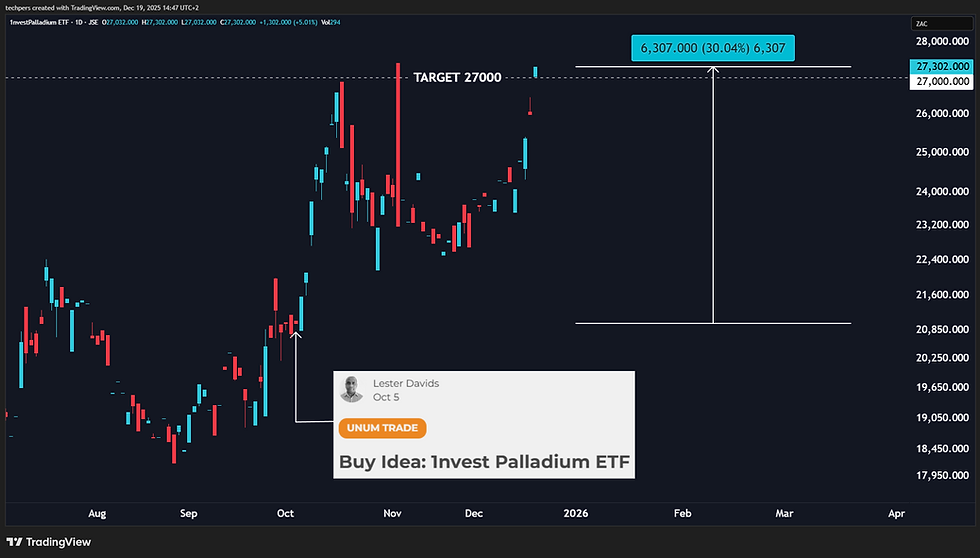Understanding Relative Price Strength (RPS) in Share Trading
- Peet Serfontein

- Sep 14, 2023
- 4 min read
Introduction:
Relative Price Strength (RPS) is a critical technical indicator used by traders and investors to assess the performance of an equity relative to the broader market or its industry peers.
By understanding RPS and incorporating it into their investment strategies, individuals can gain valuable insights into an equity's potential for future price movement. We will delve into the concept of RPS, how it is calculated, and its significance in share trading.
What is Relative Price Strength (RPS)?
Relative Price Strength, also known as Relative Strength, is a momentum-based metric that evaluates an equity's performance relative to a benchmark index or a group of peers. It is used to identify equities that have outperformed or underperformed in their market or sector over a specified period.
RPS Calculation:
To calculate RPS, we compare the price performance of a particular share to the performance of a designated benchmark index or a group of shares. The RPS calculation typically involves comparing the price change over a specific time frame, depending on the preference of the trader or investor.
The formula for calculating RPS is as follows:
RPS = (Share's Price at date x / Share's Price at date y) / (Benchmark's Price at date x / Benchmark's Price at date y) date x = most recent price of the share or benchmark date y = price of the share or benchmark x periods ago
Understanding RPS Values:
The RPS value is represented as a ratio, and it indicates the stock's relative strength compared to the benchmark or peer group. A value above 1 suggests that the share has outperformed the benchmark or peers, while a value below 1 indicates underperformance.
Significance of RPS in Share Trading:
Identifying Strong Performers: RPS helps traders and investors identify shares that have demonstrated significant price strength compared to the overall market or their sector. These shares are often considered strong performers and may continue to exhibit positive price movement.
Trend Confirmation: RPS can help confirm the prevailing trends in the market or sector. Shares with high RPS values are more likely to be in uptrends, while those with low RPS values might be in downtrends.
Share Selection: Traders can use RPS to filter and prioritise their share selection process. A higher RPS value could make a share more appealing for trading or investment opportunities.
Divergence Detection: RPS can also help identify potential divergences between a share and the broader market or sector. Divergences occur when an equity's price moves in the opposite direction to its RPS, which might signal a potential trend reversal or correction.
Limitations of RPS:
While RPS can be a valuable tool for assessing relative performance, it has some limitations that traders and investors should be aware of:
Short-Term Focus: RPS is primarily a short to medium-term indicator. It might not accurately reflect a share's long-term potential or fundamental strength.
Benchmark Selection: The choice of benchmark or peer group can significantly impact the RPS calculation. Different benchmarks can lead to different RPS values for the same share.
Conclusion:
Relative Price Strength (RPS) is a valuable technical indicator that provides insights into an equity's relative performance compared to a benchmark index or its peers. By understanding RPS, traders and investors can make more informed decisions, identify strong performers, and validate existing trends in the market or sector. However, like any single metric, RPS should be used in conjunction with other indicators and fundamental analysis to make well-rounded investment decisions.
JSE All Share headline indices RPS:
In the financial markets, certain headline indices have showcased remarkable outperformance, suggesting a notable influx of capital. This surge in capital inflow signals growing trader and investor confidence and interest in these headline indices. Whereas traders and investors seem to be reallocating their investments away from headline indices where there is an outflow of capital.
Capital Inflow headline indices (in ranking order):
Industrials
Capital outflow headline indices (in ranking order):
Resources
Financials
JSE All Share share RPS:
Understanding the performance of individual shares in comparison to the broader market is crucial for traders and investors seeking to capitalise on market trends. The table below highlights the top 20 and bottom 20 shares based on RPS, with a lookback period of the last 10 days, indicated by their ranking changes since the previous update. The table is updated daily.
The Top 20 RPS Leaders: These are the shares that have exhibited the strongest relative price performance within the JSE All Share index over the past 10 days.
The Bottom 20 RPS Laggards: These shares have shown the weakest relative price performance within the JSE All Share index over the same 10-day period.

JSE All Share sector RPS:
In this analysis, we will examine the top 10 and bottom 10 sectors based on RPS, considering the lookback period of the last 10 days. The table is also updated daily.
The Top 10 RPS Leading Sectors These sectors have demonstrated the strongest relative price performance within the JSE All Share index during the 10-day lookback period.
The Bottom 10 RPS Lagging Sectors Conversely, these sectors have exhibited the weakest relative price performance within the JSE All Share index over the same 10-day period.





Comments